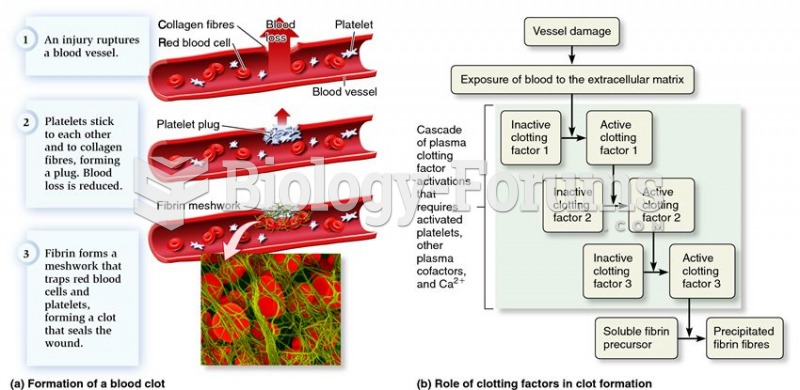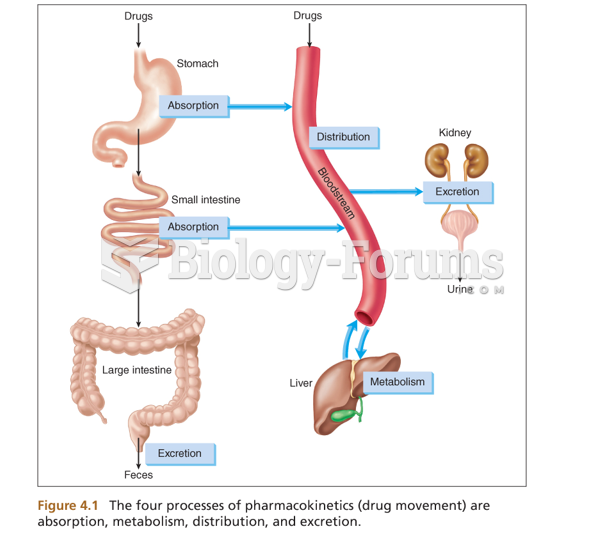Answer to Question 1
- Various theories have been proposed to explain the process nonheterosexuals go through as they come out of the closet to themselves and to others. This typically occurs during adolescence through early adulthood but may happen at any age during a person's sexual life (and some individuals choose never to reveal their true sexual identity). Also, the various stages may occur at significantly differing ages. Nearly all of the theories share certain common characteristics in that they assume a gradual, developmental process that involves various stages of thoughts, realizations, and behaviors that lead to a person's recognition of his or her nonheterosexual orientation and the decision to live openly as a gay person.
- Two of the more widely accepted models of the coming-out processone proposed by Vivienne Cass and another by Richard Troidenreflect this concept of a gradual step-like progression. Both models share certain basic stages and challenges that many gay individuals must confront on the path to coming out such as identity confusion (feeling unsure about one's sexual orientation), identity assumption (acknowledging being gay to oneself), identity acceptance (becoming comfortable with one's sexuality), and identity synthesis and commitment (becoming openly gay and incorporating a gay sexual orientation into one's routine life with pride and without shame). Both models end with the person's acceptance and integration of his or her sexual orientation into an overall self-identity and healthy life adjustment.
- Nonheterosexuals who come out live happier, better-adjusted lives. However, this does not imply that coming out is easy. On the contrary, many gay and lesbian individuals approach each step in the coming-out process with apprehension and even fear. It is no secret that being gay in a heterocentric society (one in which heterosexuality is the norm) carries with it the potential for very real emotional, psychological, and physical harm. Just some of the potentially negative consequences faced by individuals grappling with coming out include harassment and ridicule from peers, fellow students, or coworkers; rejection by friends, parents, and other family members, and even one's church; eviction from and denial of housing; loss of current job, denial of access to military service, and other forms of prejudice and discrimination; and intimidation or physical violence that may result in destruction of property, serious injury, or even death.
- Although few gay or lesbian individuals will experience all of these adversities, it's safe to say that most will encounter some of them as they move through the coming-out process. The reality or merely the expectation of these negative outcomes of choosing to live an openly gay life often takes a serious emotional toll. For example, teens who are struggling with the realization that they may be gay and the prospect of coming out to themselves and others have a significantly higher rate of psychological and adjustment problems, including depression, drug abuse, eating disorders, and homelessness. The psychological effect of greatest concern is a significantly increased risk of suicide among gay and lesbian teens as they realize their true sexuality and face the prospect of how their sexuality will play in a largely intolerant world.
- That said, if you ask any openly gay or lesbian person about the time in their life when they made the choice to come out, they will, almost to a person, tell you it was a relief, a weight had been lifted, they could finally be themselves, they felt liberated and many other like descriptions. These emotions virtually always feel stronger than the fear and problems they may face or are yet to face.
Answer to Question 2
- Researchers have also discovered a new, possible biological basis of sexual orientation that has become known as the older brother effect. A statistically significant association has been found demonstrating that as the number of older biological brothers a man has increases, so do his chances of being gay (regardless of the brothers' sexual orientations). This does not appear to be true of boys with older step or adopted brothers. Each additional biological older brother increases the odds of a gay sexual orientation by as much as one-third.
- Various scientific studies across cultures have confirmed this finding. No such relationship has been found for lesbians regardless of how many older sisters or brothers they may have. What might be the reason for the big brother effect? Obviously, the male fetus in the womb hasn't the slightest idea how many brothers he has. But the child's mother's body does. Although the correlation between male birth order and sexual orientation is real, the reasons for it are more difficult to ascertain.
- The theory most often suggested by researchers relates to immune system in women. A few fetal cells can sometimes pass from the womb into the mother's bloodstream during pregnancy or the birthing process. Some researchers speculate that these cells interact with the mother's immune system and begin to develop antibodies against male fetal cells. The more male babies the mother has had, the stronger the immune response against them. Her body, then, at least in some cases, may react by changing something (probably the hormonal balance) in the uterine environment for later-born males that, in turn, leads to a tendency toward a gay sexual orientation.







